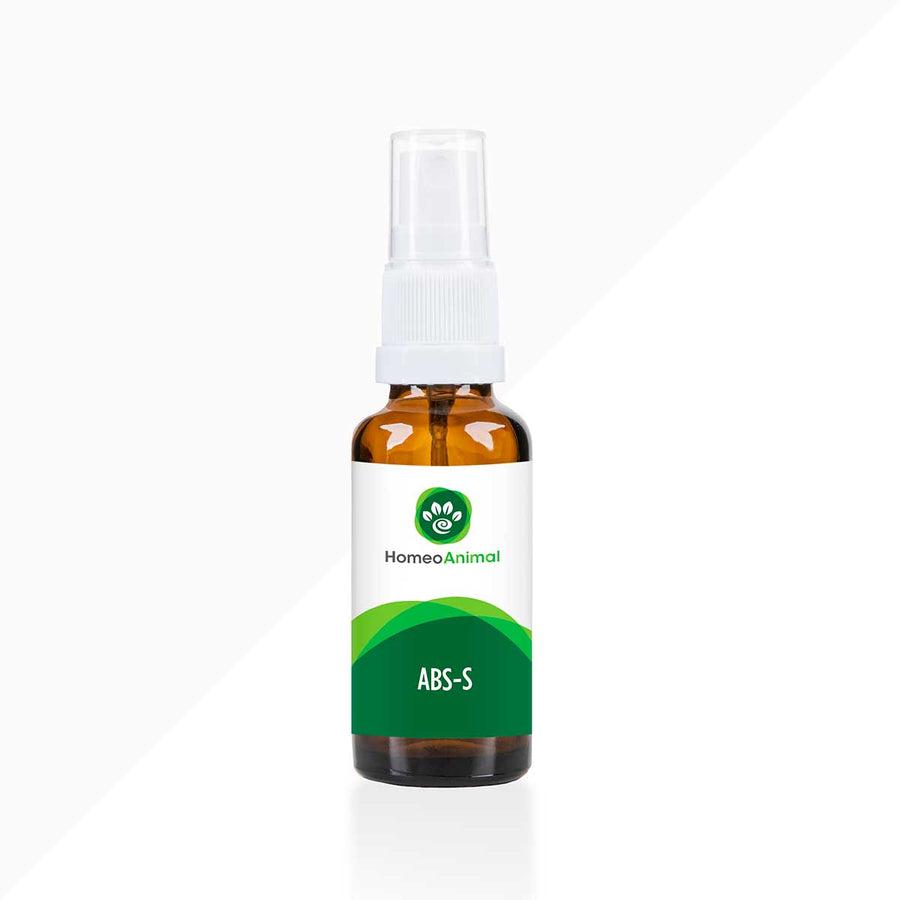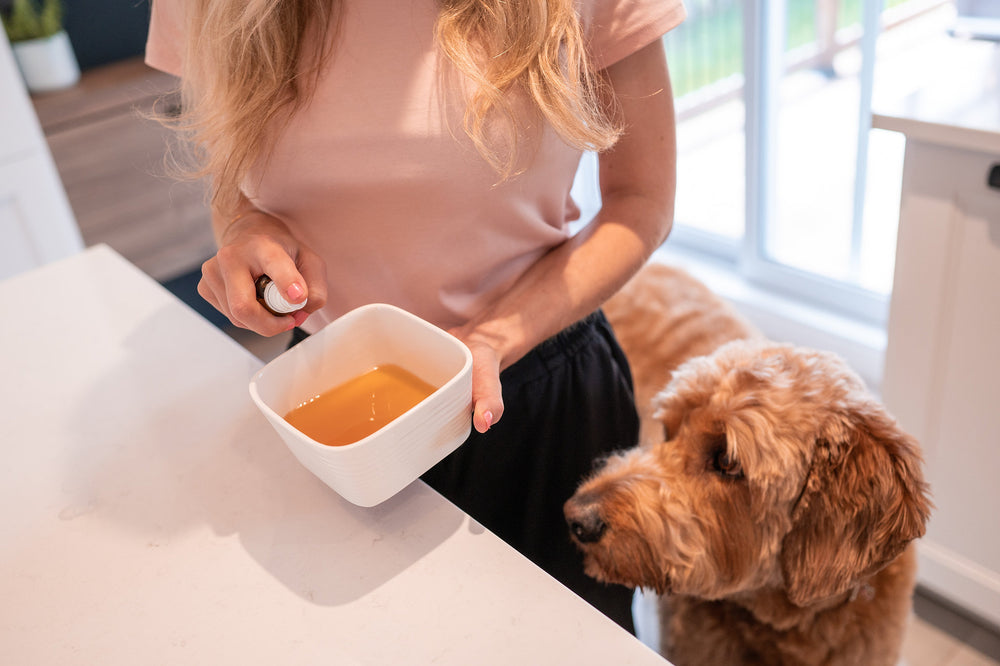Abscesses in Dogs and Cats: Vet-Verified Causes and Treatments

Cat or dog abscess is a pocket of purulent material (pus, which consists of dead white blood cells) that accumulates under the skin in response to an infection or foreign material. These infections often result from bites, scratches, or puncture wounds.
As purulent material accumulates under the skin, it forms a fibrous capsule that gradually increases pressure and causes painful swelling. If not addressed, the pressure within the capsule continues to grow until the abscess bursts.
This can lead to secondary infections, such as cellulitis or systemic infection, further complicating the condition. Prompt treatment is crucial for abscesses in dogs and cats, as neglecting this health issue can potentially lead to life-threatening consequences.
Types of Cat and Dog Abscess Seen in the Veterinary Clinic
1. Skin Abscess

An abscess can develop under a dog's skin due to the presence of a foreign body. Common culprits include pieces of shrapnel, stick fragments, tiny pebbles, or grass seeds. These foreign bodies can introduce bacteria, leading to infection and abscess formation in most dogs and cats.
Foreign objects like grass seeds can easily pierce a pet's skin, leading to complications even after the initial wound heals. When foreign material remains trapped inside, a cat's or dog's immune system responds by sending a high number of white blood cells to the area. This response isolates the foreign material from the rest of the body and creates an abscess.
Although these internal abscesses are not caused by bacterial infections, they can still be quite painful. Typical signs of a foreign body skin abscess include swelling, warmth, and pain when touched.
How are dog and cat skin abscesses treated?
When dealing with this painful condition, I typically begin by sedating the affected dog. Once the dog is sedated, I clean the abscess site and carefully cut through the infected area to drain the pus.
After draining, I thoroughly flush the abscess with diluted iodine to ensure all pus is removed. Then, I locate and remove any foreign material from the fibrous tissue. To aid in wound healing, I usually add one or two sutures while leaving a small part of the wound open for drainage.
In these cases, I administer only pain medication coupled with anti-inflammatory medication, and do not use antibiotics.
2. Anal Gland Abscess in Dogs

Anal gland or anal sac abscess is a common condition I routinely encounter in the clinic. The anal glands, two lentil-shaped structures located internally underneath the rectum, can become abscessed due to blockage or infection.
The anal glands are how dogs recognize each other, and over time, these sacs can fill with fluid. While many dogs can express their anal glands naturally, some dogs—particularly those on a raw diet or those with underlying skin allergies (itchy skin)—tend to develop anal gland impaction.
The accumulation of secretions can lead to inflammation in the anal glands, resulting in cellulitis and ultimately abscess formation. This inflammation can cause a bacterial infection, further contributing to the development of the abscess.
If left untreated, the abscess in the anal sacs can rupture, causing significant pain to the dog.
Signs of blocked anal glands in dogs
Do you think your dog has a blocked anal gland? Dogs with anal gland issues often exhibit the following signs:
- Scooting on the floor
- Constantly licking or biting their tail region
- Reluctance to sit, appearing uncomfortable when trying to do so
- Swelling, redness, and discharge around the anal area
An anal gland abscess in dogs is a bacterial infection
Unfortunately, an anal gland abscess requires antibiotic therapy because it is a bacterial infection. If left untreated, the infection can worsen, leading to necrosis of the surrounding tissue and the development of a fever.
Can you prevent the anal gland from developing abscesses?
I understand that antibiotics can be a touchy subject for dog owners who prefer a holistic approach to treat abscesses. That’s why I always advocate for prevention over treatment. The most effective way to avoid anal sac abscesses is by regularly emptying your dog’s anal glands.
If you don't have pumpkin, add some psyllium husk instead:
- For big dogs (those over 10 kg): Give ½ tablespoon every 12 hours.
- For little dogs (those under 10 kg): Give ¼ tablespoon every 12 hours.
Zumalka Probiopet is Designed to Promote a Happy Healthy Gut!
Looking to prevent anal gland issues or support your dog during antibiotic therapy? Consider using Zumalka's PROBIOPET.
PROBIOPET contains a diverse array of "good" gut bacteria. These beneficial bacteria not only reduce the risk of anal gland issues, but also help maintain your dog's gastrointestinal health and strength while on antibiotic therapy.
Zumalka's PROBIOPET is all-natural, chemical-free, and ideal for pet parents looking to support their pups' healing journey.
3. Tooth Root Abscess in Dogs

Any type of tooth abscess in dogs can be very painful. They cause severe facial swelling, and if left untreated, they can result in eventual rupture and necrosis (dying tissue). A problem with a dog's teeth may be the underlying issue. The treatment for dental abscesses is the removal of the affected tooth.
However, if the abscess is mild, your vet may recommend a root canal treatment, which is often performed by a veterinarian dental specialist. In any case, tooth root abscesses in dogs requires pain relief and antibiotic therapy.
The case of a 19-year old cat with an abscess in the affected tooth
In 2021, I was contacted by a cat parent whose 19-year-old kitty had stopped eating and was rapidly losing weight. Upon examination, I found the cat's temperature was nearly 40 degrees Celsius, significantly higher than the normal 38.5 degrees Celsius.
Further tests revealed that the cat was suffering from sepsis due to a bacterial infection stemming from an untreated tooth root abscess. Despite hospitalization and emergency dental treatment, the cat's condition was too severe, and it had to be euthanized.
Now, I'm certainly not trying to scare anyone with this story. Instead, my goal is to educate and help pet owners prevent tooth root abscesses at home. Here are my top three suggestions for preventing tooth root abscesses in dogs and cats:
- Maintain dental care: Regularly brush your pet's teeth and provide VOHC seal dental products to ensure good oral hygiene.
- Avoid bones and hard chews: These can cause tooth fractures, exposing the pulp cavity and leading to tooth root abscesses.
- Schedule routine dental care: Talk to your vet about regular dental scaling and polishing. Remember, prevention is better than treatment. Routine professional cleanings can help protect your pets from future dental problems.
4. Cat Bite Abscess aka "Bite Wound Abscesses"

When cats bite other cats, they introduce bacteria into a small puncture wound. Because bite wounds are small, the skin heals over quickly, trapping the bacteria underneath. This trapped bacteria can lead to an infection in the affected area and abscess formation.
Within a few days, cats may show signs of illness such as lack of appetite and lethargy due to pain and inflammation. An abscess can develop at the bite wound within the first 48 hours. If left untreated, these abscesses can burst, causing a secondary skin infection.
Signs of Abscesses in Dogs

The outward signs of an abscess in a dog's body will vary depending on its location. For skin abscesses, owners may notice a painful, firm swelling that is warm to the touch. Your pet may also constantly lick the affected area.
Dogs and cats with abscesses may appear lethargic, lose interest in food, and show signs of lameness, especially if the abscess is on the legs or feet.
In the case of a dental abscess, facial swelling, bad breath, loss of appetite, and discoloration of the affected tooth are typical signs in dogs.
Treating Dog Abscesses at Home or at the Vet Clinic

Treating an abscess in the veterinary clinic is relatively straightforward. Here's how I do it:
- Sedate the dog or cat: An abscess can be painful, so it's kinder to sedate the animal to ensure they don’t feel the pain during treatment.
- Clip and clean: Once sedated, clip the fur around the abscess site and clean the area with an iodine or chlorhexidine solution.
- Lance: Using a scalpel blade, gently lance the abscess pocket to allow the purulent material to drain out.
- Flush: After draining the purulent material, carefully flush the abscess capsule with a diluted iodine and saline solution. This acts as an antimicrobial and helps remove any remaining purulent material.
- Leave open to drain: For small abscesses, leave the wound open to allow for drainage. For larger abscesses, add a few sutures and leave a small opening for drainage. The wound usually takes a week or two to heal on its own.
Do all abscesses in dogs require antibiotics?
The short answer is no. If there is no evidence of infection, antibiotics are typically not prescribed. Instead, I will send the dog home with pain relief once the abscess has been drained.
Do cat bite abscesses require antibiotics?
After a veterinarian drains the abscess and cleans the capsule, antibiotics are not typically given. Instead, the cat will be sent home with a few days of pain relief.
However, if the abscess is left untreated for too long and ruptures at home, it can lead to secondary necrosis and infection of the surrounding tissue. In such cases, the infection around the tissue can be quite severe, making antibiotics necessary despite initial avoidance.
A helpful tip: if you're trying to avoid antibiotics for a cat bite abscess or skin abscess in a dog or cat, take your pet to the vet immediately. The longer you wait, the more likely a secondary infection will develop as a result of the rupture.
Can You Treat an Abscess on a Dog at Home?

Thinking of treating your dog's abscess at home? As a veterinarian, I strongly advise against it! Abscesses can be very painful and, if left untreated, can lead to serious complications like necrosis of the surrounding skin and even pyrexia (fever).
If you suspect your dog or cat has an abscess, it's crucial to take them to a veterinarian as soon as possible. Prompt professional treatment can prevent these complications and ensure your pet's speedy recovery.
Zumalka's Vitalopet is Designed to Promote Physical and Mental Well-Being

Abscesses are painful for pets, and we understand that taking your pet to the veterinary clinic can be quite stressful. This is why you should consider checking out VITALOPET, a homeopathic tonic designed to support mental well-being and promote a calm mind for your pet.
VITALOPET contains an array of all-natural ingredients to help your dog or cat on their road to recovery. It contains Rhodiola rosea, which is said to calm an anxious mind, and Ashwagandha, an ancient root extract that reduces anxiety and promotes fast healing.
Encourage a healthy mind and body with VITALOPET today!
Conclusion
Before treating an abscess at home, consult your veterinarian. Abscesses are painful and, if untreated, can burst, leading to complications and higher vet bills. If you suspect your dog or cat has an abscess, take them to the vet immediately.
Got a question about dog abscesses? Let us know in the comments below.






Leave a comment